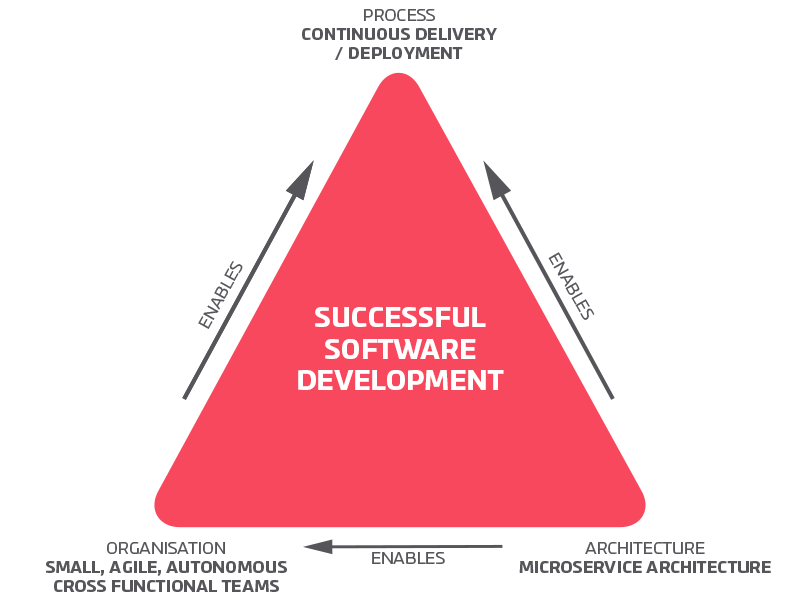Before we go into the benefits of microservices architecture, trending topic in the IT landscape and a technology that is highly appreciated by the likes of Amazon and Netflix, let’s first break down what microservices really are.
Of course any software application is based on architecture, rules that broadly specify how the software is technically structured. This architecture defines how new functionalities have to be developed, what is possible considering development, and what not. If we look at the architecture, different styles exist. Each of them with their own advantages/disadvantages. Microservices architecture is such a style. The essence of this architecture being to cut down one big application (monolith) into very small pieces/applications called microservices. All these seperate microservices talk to each other and eventually operate like that one big application. For the end-user nothing is different, for the developers it is. So I hear you thinking “why complicate this so much, what’s the advantage?”
The 5 key benefits of Microservices Architecture
Better performance
Quicker service towards the end-user usually results in more sales. Better software-service directly effects business value. With microservices you get to see which little part of your software is not working, because you see which small application (within the big one) is simply not performing. This individual microservice can then easily be scaled up or optimized.
Better software maintenance
Software can be developed more quickly. Changes and new features can be brought to the end-user faster. Why? Small applications are easier to understand than big/complicated ones, which makes them easier to change and less sensitive to bugs. This also means that you can easily let one microservice die and replace it with another better microservice. In monolithic applications this would be a complicated surgery with the risk of the complete application falling apart.
More effective development teams
When a software development project grows the team that works on it also tends to grow. This means an increase in communication between project members. More communication in itself is not a bad thing, but there is a tipping point where it results in your best developers being busy with communication 80% of their time, instead of developing/optimally using their skills to further the project. For project managers this is shown in delays of deliveries. With microservices architecture smaller teams can be build around one microservice, instead of one big team around the monolithic application, resulting in the avoidance of crippling communication-overhead and greater velocity.
Polyglot development
Because all applications have their own codebase, and only talk to each other via standard protocols, it is possible that every microservice is written in a different language. This enables you to pick the right tool for the right microservice and also offers you the opportunity to fish from a larger pool of developers.
Scalability
Efficiently handle additional load:
- On top of everything else, today’s software architect needs to be able to “think big” when building applications.
- To build at scale means to build software that can continue to work when demand grows beyond initial expectations. Systems that can work at scale don’t break when under pressure; instead they incorporate built-in mechanisms to increase capacity in a safe, elastic way. This added dimension requires a special perspective to building software and is essential to the microservices way.
- Properly decoupled services can be scaled horizontally and independently from each other, adding additional capacity where it is needed the most.

Does microservices architecture benefit every organisation?
Of course the success of shared-economy giants and the leading digital companies of this age is undeniable, and yes almost all of them preach microservices. Saying this, beware that the focus here is on large companies. For smaller companies and start-ups microservices tend to put the focus on architecture instead of business value and solving problems, which is what companies need most in this stage. Interested in discussing the opportunities microservices architecture can bring your organisation? Get in touch with us via my contact details below, or fill in the contact form on our website. You can of course also read more about microservices through our other microservices related blogs/pages below.
